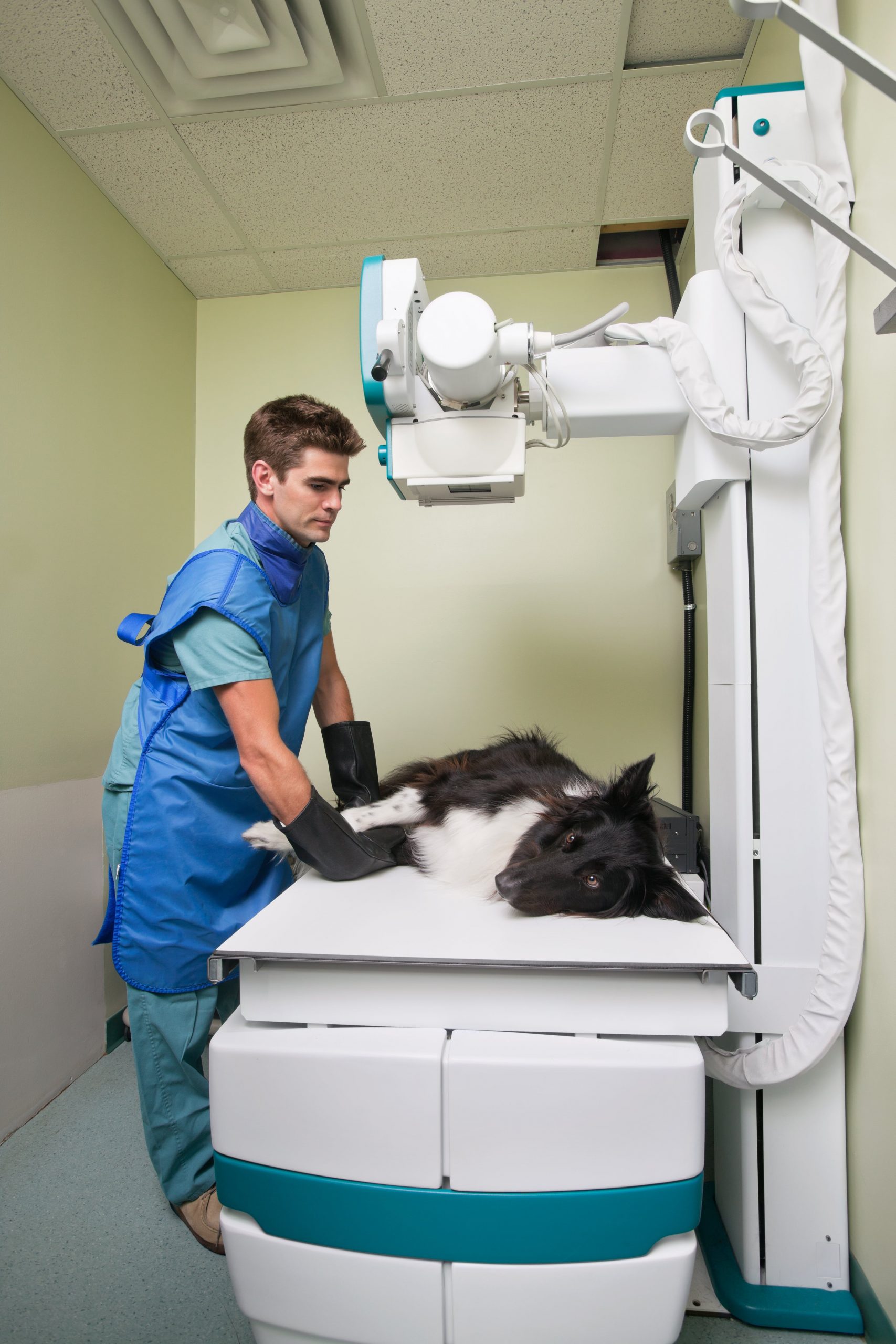
Veterinarians consider the use of digital radiograph technology as a critical tool in modern diagnostic procedures. Radiographs, which are commonly known as X-rays, are used to evaluate injuries and conditions which require more than external examination. Radiology equipment gives us a non-evasive way to observe your pet’s internal physiology so that we can provide a more thorough and accurate diagnosis. Veterinarians use radiographs to detect bone fractures, bladder stones, and tumors, soft tissue problems (those related to the heart, stomach, intestines, reproductive, and urinary systems) as well as to locate swallowed foreign objects such as toys or rocks.
The imaging procedure is completely painless and can be performed on calm and cooperative pets without sedation. Your veterinarian may administer a sedative or general anesthesia in cases where a dog or cat has trouble becoming fully relaxed naturally.
Digital imaging allows to view X-rays more quickly, not to mention more clearly.
Additionally, digital imaging allows X-rays to be evaluated by a board-certified radiologist, who gives us his expert advice and reports.
Patients are lightly sedated for radiology and in some cases, they may require general anesthesia. Your veterinarian will discuss this with you prior to the procedure taking place.